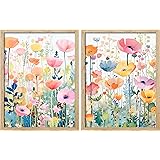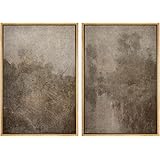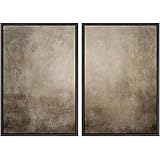Ever walked into a room and felt something was just… off? Perhaps you couldn’t quite put your finger on it, but the space didn’t feel as comfortable, cohesive, or stylish as you’d hoped. Many of us have been there. Creating a truly beautiful and functional home isn’t just about picking pretty things; it’s about understanding the subtle nuances of design that can elevate a space from good to absolutely stunning. If you’ve been watching the video above, you’ve already started to uncover some common interior design mistakes that homeowners often make.
But the journey to a perfectly styled home doesn’t stop there. Beyond identifying what’s wrong, it’s crucial to understand the ‘why’ behind these common design errors and, more importantly, ‘how’ to transform them into intentional, thoughtful design choices. This article builds on the excellent foundation provided in the video, delving deeper into each point to give you a comprehensive guide to refining your living spaces.
Beyond the Blunder: Decoding Common Interior Design Mistakes and How to Fix Them
Let’s face it, interior design can feel like a complex puzzle. With so many elements to consider – from color palettes to furniture placement – it’s easy to overlook crucial details. But don’t despair! Mastering these areas can significantly enhance the look, feel, and functionality of your home. By understanding and addressing these common interior design mistakes, you’re not just fixing problems; you’re building a more harmonious and enjoyable living environment.
The Silent Language of Furniture Legs: Ensuring Style Cohesion
It’s fascinating how a seemingly small detail like a furniture leg can completely dictate the style of a piece and, by extension, an entire room. As highlighted in the video, furniture legs speak a silent language, communicating whether a piece is traditional, modern, or somewhere in between. Think of it like a subtle accent in a person’s speech – it reveals a lot about their origins.
Mixing too many distinct leg styles, such as sleek chrome legs (modern) with ornate, carved legs (traditional) and tapered wooden legs (mid-century modern) in a single space, can create a visual cacophony. It’s like having multiple conversations happening at once; nothing truly stands out, and the overall message gets lost.
-
Understanding Leg Styles:
- **Tapered Legs:** Often associated with Mid-Century Modern design, these legs gracefully narrow towards the bottom, conveying lightness and elegance. They are common on sofas, side tables, and dressers.
- **Chrome or Metal Legs:** Frequently found in Modern and Contemporary styles, these offer a sleek, industrial, and often minimalist aesthetic. They can appear on chairs, coffee tables, and desks.
- **Ornate/Carved Legs:** These are hallmarks of Traditional, Victorian, or French Provincial designs, featuring intricate details, curves, and often a heavier, more established presence. Think of Queen Anne legs or cabriole styles.
- **Block Legs:** Solid, often rectangular or square legs that give a sturdy, sometimes rustic or contemporary feel, depending on the material and finish.
-
The “No Legs” Strategy for Harmony:
A clever way to achieve balance when you have a prominent leg style is to introduce furniture pieces that sit directly on the floor or a rug, effectively having “no legs” that compete visually. Consider a large, block-style sofa paired with an accent chair featuring tapered legs. Or, a sleek, legless ottoman alongside a console table with slender metal legs. This creates a visual “pause,” allowing the distinct leg styles you *do* have to shine without clashing. This approach ensures your furniture pieces feel like they belong together, even if they aren’t perfectly matched in every detail.
The Unsung Hero: Choosing the Right Paint Finish
Everyone focuses on paint color, but the video rightly points out that choosing the wrong paint finish is a significant interior design mistake. The finish dramatically impacts durability, cleanability, and how light interacts with your walls, much like the difference between a matte photograph and a glossy one.
There are typically five main paint finishes, each with its own characteristics and ideal applications:
-
Flat/Matte:
- **Characteristics:** Least reflective, velvety appearance. Excellent at hiding imperfections, as the lack of sheen blurs texture.
- **Best for:** Low-traffic areas like formal dining rooms, bedrooms (especially ceilings), or walls with minor imperfections you want to disguise.
- **Avoid in:** High-moisture or high-traffic areas (kitchens, bathrooms, hallways), as it’s difficult to clean and prone to scuff marks.
-
Eggshell:
- **Characteristics:** A slight sheen, more durable than flat, easier to clean. It’s like the “Goldilocks” of paint finishes – just right for most spaces.
- **Best for:** Living rooms, family rooms, bedrooms, and dining rooms. It offers a good balance of appearance and durability. Often considered the “safe zone” for general living spaces.
-
Satin:
- **Characteristics:** Noticeably more sheen than eggshell, with a smooth, pearl-like finish. Highly durable and very easy to clean.
- **Best for:** High-traffic areas, kitchens, bathrooms, laundry rooms, and trim. The increased durability stands up well to frequent washing and moisture.
-
Semi-Gloss:
- **Characteristics:** High sheen, very durable, and incredibly easy to clean. Reflects a significant amount of light.
- **Best for:** Kitchens, bathrooms, doors, trim, and cabinets. Its hard finish is resistant to moisture and stains. However, it will highlight any wall imperfections, so a perfectly smooth surface is ideal.
-
Gloss/High-Gloss:
- **Characteristics:** The most reflective and durable finish, almost mirror-like. Extremely easy to clean.
- **Best for:** Areas needing maximum durability and shine, like furniture, doors, or architectural features that you want to highlight. It’s a bold choice for walls and definitely not for surfaces with texture or imperfections, as it amplifies every bump and divot.
When selecting paint, consider your room’s function and how much wear and tear it will endure. A local paint specialist can also be an invaluable resource, guiding you to the right finish for longevity and aesthetic appeal.
Pattern Play: Balancing Visual Interest with Calm
Patterns are the vibrant spices of home decor, adding personality, depth, and a focal point. But just as too much spice can overwhelm a dish, an abundance of competing patterns can turn a room into a visually chaotic space. The video aptly describes it as making a space feel “loud and messy.” It’s a common interior design mistake to throw every beautiful pattern you find into one room.
The key to successful pattern mixing is balance, much like a symphony where different instruments play together in harmony, not competing for the loudest note.
-
The Rule of Three (and Beyond):
Instead of layering a patterned accent chair with a patterned pillow, a patterned throw, and placing it on a patterned rug, embrace the power of solids and textures. If your accent chair is your key patterned piece, complement it with a solid-colored, textured pillow and a plain, soft throw. The texture of the solids provides a restful counterpoint to the visual energy of the pattern, allowing it to truly stand out.
-
Varying Scale:
When combining multiple patterns in a space, ensure they have varying scales. Imagine a large-scale floral wallpaper, a medium-sized geometric rug, and small-scale polka dot throw pillows. This variation prevents visual competition. They each have their own “voice” without shouting over one another.
- **Large-scale pattern:** Creates a strong statement and defines the mood.
- **Medium-scale pattern:** Bridges the gap and adds continuity.
- **Small-scale pattern:** Offers subtle detail and texture.
-
Color Palette Consistency:
Patterns are excellent for establishing a color palette. Pull accent colors from your dominant pattern and repeat them in solid fabrics or accessories. This strategy ties everything together, ensuring a cohesive look even with diverse patterns.
Function Over Form (or Both): Designing for Your Lifestyle
A truly well-designed home is not just a showroom; it’s a living, breathing space that caters to the rhythms of your daily life. Disregarding function in favor of pure style is a significant interior design mistake. A beautiful home that doesn’t work for you is ultimately frustrating and unsustainable, much like a stunning sports car that can’t handle your daily commute.
Always consider your habits and needs when making design choices:
-
Entryway Essentials:
If you’re someone who often comes through the front door laden with bags, keys, and shoes, a simple console table with a bowl for keys, a shoe rack hidden beneath, or a stylish storage bench can prevent immediate clutter. This ensures the first impression of your home is one of order, not chaos.
-
Dining Room Rugs:
When choosing a rug for your dining room, prioritize one that allows chairs to slide easily without snagging and, crucially, is easy to clean. Low-pile rugs made from durable, stain-resistant materials like polypropylene or wool blends are often excellent choices. You want a rug that can withstand spills and crumbs without becoming a permanent fixture of your dining experiences.
-
Smart Bedroom Storage:
If your bedroom closets are small, look for beds with integrated storage drawers or consider stylish storage ottomans at the foot of the bed. These pieces serve dual purposes, marrying aesthetic appeal with much-needed practicality. Even selecting nightstands with drawers can add valuable hidden storage.
The best designs seamlessly merge form and functionality. Your home should look good, yes, but it should *feel* good and *work* well for you and your family every single day.
The Power of Illumination: Layering Your Lighting
Relying solely on overhead lighting is a pervasive interior design mistake that can make a space feel stark, cold, and unwelcoming. Overhead lights, while functional, often cast harsh shadows and fail to create the warm, layered ambiance that transforms a house into a home. Imagine a stage with only a single, bright spotlight – it serves a purpose, but lacks depth and atmosphere.
The secret to great lighting is layering, which involves incorporating different types of light sources to create depth, highlight features, and define zones:
-
Ambient Lighting:
This is your general, foundational light – often overhead fixtures like recessed lights, chandeliers, or flush mounts. Its purpose is to provide overall illumination for navigating the space.
-
Task Lighting:
These lights are focused on specific activities. Think of a desk lamp for reading, under-cabinet lighting in the kitchen for food prep, or a floor lamp next to a reading chair. They provide essential brightness where needed.
-
Accent Lighting:
Designed to highlight specific features or create mood. Picture lights illuminate artwork, wall sconces add decorative elements and soft light, or small lamps on shelves that draw attention to decor. This layer adds warmth, visual interest, and can make a room feel complete.
Integrate a variety of lamps – table lamps, floor lamps, wall sconces, and even small accent lamps – into every room. These not only provide necessary light but also act as decorative elements, grounding spaces and adding personality. The soft glow of lamps can completely alter the mood of a room, creating a sense of coziness and intimacy that overhead lights simply cannot achieve on their own.
Mastering the Canvas: Wall Art Orientation and Placement
The art on your walls is more than just decoration; it’s a critical element that can define the scale, proportion, and visual flow of a room. Incorrect wall art orientation or placement is another common interior design mistake that can make a space feel awkward or incomplete.
-
Orientation is Key:
Always choose wall art that matches the orientation of your wall space. A tall, narrow wall begs for a vertical (portrait) piece or a vertical arrangement of multiple pieces. Conversely, a long, horizontal wall is best complemented by a horizontal (landscape) piece or a series of artworks arranged horizontally. Placing a small, vertical piece on a vast horizontal wall can make the wall feel emptier and the art appear disconnected, like a tiny island in a huge ocean.
If you have a particularly large or unusually shaped wall, don’t be afraid to create a gallery wall that incorporates pieces of different orientations and sizes, as long as the overall arrangement flows harmoniously with the wall’s dimensions.
-
The Golden Rule of Hanging Height:
When hanging art above furniture pieces like a sideboard, nightstand, or dresser, the video correctly emphasizes the importance of proximity. The ideal hanging height is typically 5 to 10 inches above the top of the furniture piece. This range ensures that the art and the furniture read as a cohesive unit, rather than two separate, floating elements.
If the art is hung too high (more than 10 inches), it disconnects from the furniture below, creating a visual void. Conversely, if it’s too low, it can feel cramped. The goal is to create an intentional relationship between the art and the piece it’s accentuating, making them feel like they were styled together, not just placed arbitrarily.
Furthermore, when hanging art on a wall without furniture, a general guideline is to hang the center of the artwork at eye level for an average person, which is typically around 57-60 inches from the floor.
By considering these nuances of art placement and orientation, you can ensure your walls enhance your home’s aesthetic, rather than detracting from it. Addressing these prevalent interior design mistakes will undoubtedly elevate your space.











